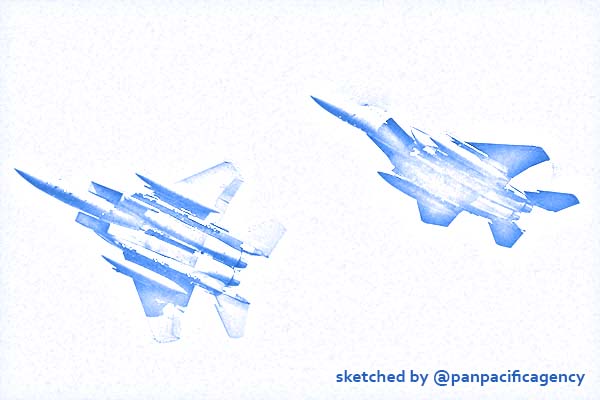[Analytics] Expect more China-South Korea military aircraft encounters, ‘but not conflict’

Analysts say China’s strengthened presence in the East China Sea will lead to more frequent military encounters between Chinese and South Korean forces, but confrontation is unlikely. Photo: EPA-EFE. Sketched by the Pan Pacific Agency.
Chinese jets will be spending more time in East China Sea as Beijing strengthens military presence, analysts predict. China ‘stepping up’ monitoring of US military activities over the East China Sea. Teddy Ng specially for the South China Morning Post.
Chinese military aircraft will enter South Korea’s air defence territory more frequently as Beijing strengthens its presence in the East China Sea and monitors US activities, but a confrontation between Beijing and Seoul is unlikely, according to military analysts.
The assessment was made after South Korea’s defence ministry said on Tuesday it would summon Russian and Chinese embassy officials to register formal protests against repeated incursions by their warplanes that morning.
South Korean officials said it was unknown if China and Russia were coordinating their military activities, but it was not the first time Chinese warplanes had entered the South Korea air defence identification zone (ADIZ).
Twice during the incursions, one of the Russian planes violated South Korean airspace, prompting warning shots in response from South Korean fighter jets, in the first such encounter between the two countries.
An ADIZ is not covered by international treaties but is declared by a state for the early identification and location of foreign planes approaching its territorial airspace.
There has been a partial overlap between South Korean and Chinese declared zones over the East China Sea since 2013, when Seoul extended its ADIZ to cover a newly declared zone by Beijing, in response to rising tensions between China and Japan, over sovereignty of the disputed waters.
Yue Gang, a retired People’s Liberation Army colonel, said this overlap would inevitably lead to more encounters between the two countries’ warplanes.
“We have our missions in the East China Sea and the Sea of Japan,” he said. “Our military aircraft will pass through the ADIZ when carrying out these missions, but it is unlikely there will be confrontation between South Korea and China. The ADIZ is not airspace.”
Yue said Tuesday morning’s entry into the South Korean ADIZ by Chinese and Russian warplanes at the same time was more likely to be coincidence than a coordinated move.
Beijing-based military observer Zhou Chenming said Tuesday’s incidents had probably occurred by accident, during routine training in international airspace by the Russian and Chinese air forces. “It’s common that an aircraft goes off course and misses direction a bit,” he said.
Shanghai-based military affairs commentator Ni Lexiong said China was stepping up its monitoring of US military activities over the East China Sea.
“It is also a message to South Korea, a US ally, that we are here, so don’t get too close to the US, especially amid the China-US trade war,” he said.
Additional reporting by Associated Press